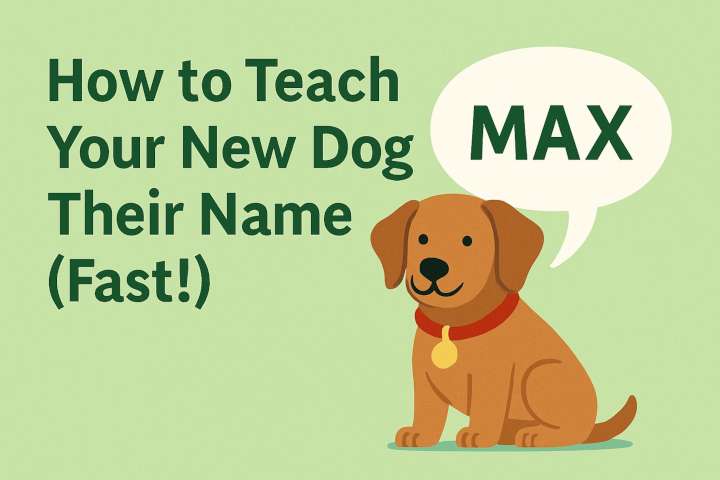How to teach your dog their name is one of the first and most important steps in puppy training. A dog that knows their name will respond more easily, stay focused, and build stronger communication with you. It’s the foundation of all future training—if your dog doesn’t respond to their name, getting their attention becomes a challenge. Luckily, teaching your dog to recognize and respond to their name is easier (and faster) than you might think.
In this guide, we’ll show you exactly how to teach your new puppy or rescue dog their name using simple, reward-based techniques that build focus, trust, and connection from day one.
Why Name Recognition Is Important
Teaching your dog their name is not just about calling them—it’s about creating a positive association that grabs their attention every time. When your dog learns that their name means something good is about to happen, they’ll start responding quickly and consistently.
Name recognition helps with:
- Training commands
- Recall (coming when called)
- Emergency situations
- General communication and bonding
When to Start Name Training
You can begin teaching your dog their name the moment they arrive home. Puppies and rescue dogs alike are ready to learn within the first few days, as long as the sessions are short, fun, and pressure-free.
Avoid using the dog’s name in a negative tone or when scolding—this can create confusion or fear instead of a positive association.
Step-by-Step: How to Teach Your Dog Their Name
Step 1: Pick a Quiet Environment
Start in a distraction-free space like your living room. Have a handful of high-value treats ready.
Step 2: Say the Name Once
Say your dog’s name clearly and in a happy tone. The moment they look at you—even slightly—mark the behavior with “yes!” or a click (if using a clicker) and give a treat.
Step 3: Repeat and Reward
Wait a few seconds, then say the name again. Every time your dog turns their head or makes eye contact, reward immediately. Practice 5–10 repetitions per session.
Step 4: Increase Difficulty
Once your dog consistently responds at home, try the exercise in different rooms, then outdoors, gradually increasing distractions.
Step 5: Use the Name in Real Contexts
Incorporate their name before commands or during play, but only when you can reinforce it positively. Avoid overusing it when they’re not paying attention—this can weaken the association.
Pro Tips for Faster Results
- Use a happy, encouraging tone every time
- Keep sessions short: 3–5 minutes, 2–3 times a day
- Practice at different times of day and in various locations
- Always reward the response, even if it’s just a glance at first
- Avoid using the name as a command or reprimand
Common Mistakes to Avoid
- Repeating the name over and over without a response
- Using the name to punish or scold
- Calling your dog’s name in a bored or frustrated tone
- Expecting instant results—some dogs take longer, especially rescues
How Long Does It Take?
Many dogs learn their name within a few days if training is consistent and positive. Others may need a week or two, especially if they’ve had multiple names in the past or come from stressful environments.
With patience and repetition, your dog will quickly learn that responding to their name leads to rewards and connection.
Conclusion
Final Thoughts on How to Teach Your Dog Their Name
Teaching your dog their name is one of the simplest yet most powerful tools in your training toolkit. With a few treats, the right timing, and a bit of enthusiasm, your dog will soon respond to their name with eager attention—paving the way for a lifetime of good communication.
Want more training techniques? Visit our Dog Training section for expert tips and beginner-friendly guides.

